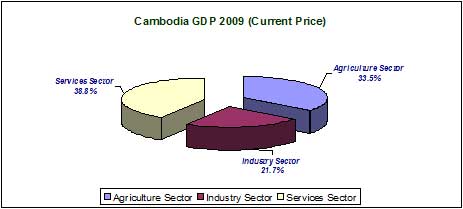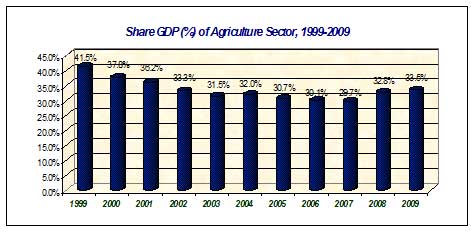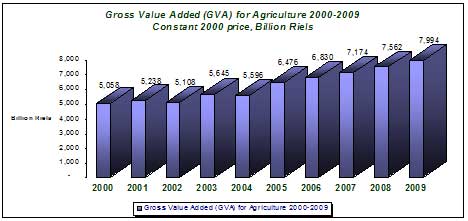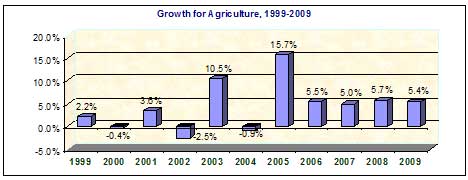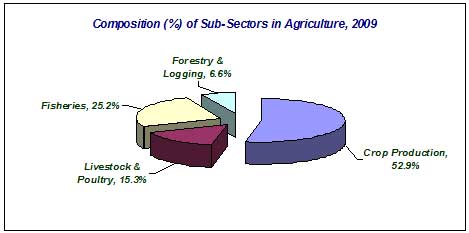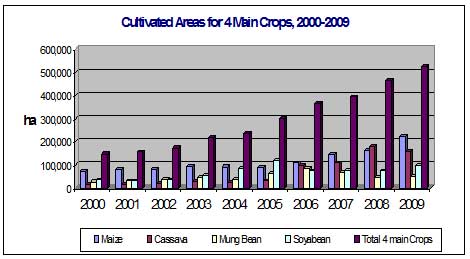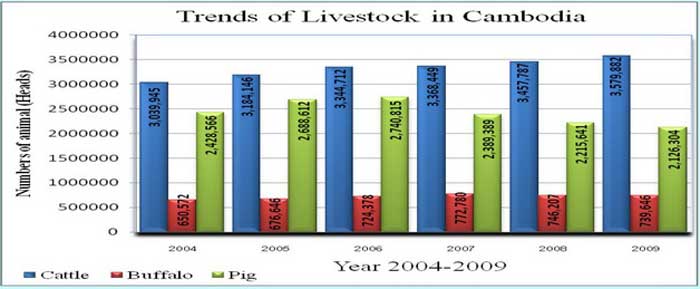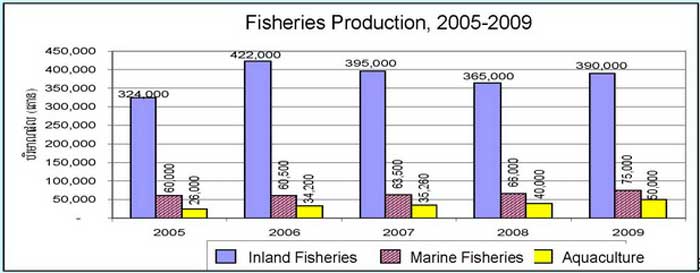|
Presentation on Agricultural Productivity and Diversification The 3rd Cambodia Development Cooperation Forum 2-3 June 2101, CDC, Phnom Penh, Cambodia Prepared by H.E Chan Tong Yves Secretary of State, MAFF, and Co-Chairs of TWG-AW ******
Your Excellency Chairman
Excellencies, Ladies, and Gentlemen
It is, indeed, a great pleasure for me to attend the 3rd Cambodia Development Cooperation Forum.
On behalf of the Ministry of Agriculture, Forestry and Fisheries (MAFF), I would like to pay my profound respect to your Excellencies, ladies, and gentlemen, here present, and to express my sincere appreciation for the forum.
I want to take this opportunity to thank all External Development Partners (EDPs) for their contribution and efforts to assist the Royal Government of Cambodia (RGC) in its endeavor to develop its agriculture for economic growth and poverty reduction with the aims of reaching Cambodia Millennium Development Goals (CMDG).
Here after, is my presentation on Agricultural Production and Diversification in Cambodia.
Agriculture continues to be the mainstay of national economy comprising 33,5% GDP in 2009 and absorbing 70% of the total labor force.
Growth in agriculture has been volatile, but continues to be low at 5.5% during four years period from 2006 to 2009 after a big jump in 2005 with 15.7% of course.
Crops production remains the core activities with 52.9% share in agriculture GDP. The total cropped areas are 3,752,040 ha, of which rice occupied 2,719,080 ha(72.47%), other seasonal and perennial 1,032,960 ha (27.53%).
Rice continues to be cultivated predominantly and constitutes the core activity of the current farming system. Rice production is getting more intensified.
Some figures for year 2009
– Harvested area from 2.41 million ha to 2.67 million ha an increase of 10.77%; – Production from 5.98 million tons to 7.58 million tones an increase of 26.72%; – Yield also increased from 2.47t/ha to 2.83 t/ha an increase of 14.40%; – Surplus milled rice increased from 1,319,571 t to 2,244,598 t an increase of 70%; In 2009, rice surplus is calculated at 2,24M/Tons as milled rice equivalent to 3,59 M/Tons paddy.
Although rice continues to be cultivated predominantly, Cambodia is no longer rice mono-culture country. Its agriculture, now, has diversified into a wide range of crops such as seasonal cash crops, perennials crops, livestock production, fish production etc… Seasonal Cash Crops
Fruit trees and perennials
Rubber Plantation
Livestock Production 1- Household Animal Raising: - Cattle: 3,579,882 heads - Buffaloes: 739,646 heads - Pigs: 2,126,304 heads - Poultry: 20.20 million heads
Semi-commercial animal farm 2009
Aquaculture
Cambodian Agriculture is moving from subsistence farming to commercial farming, producing not only for domestic food consumption, but also for export as well as for processing.
Exportable Agricultural products
Local use and export of some Agricultural products
Agri-Business and Agro-Industry (Data from 2007)
Successes in agricultural production have been attributed to several factors, such as: - Land resources are available and more fully exploited, - Water resources are available and more fully exploited, - Irrigation system is developing. About 41% of cultivated areas are irrigation-secured areas either full or supplementary, - Abundant manpower in rural area at low labor cost and more skillful, - Agricultural research and extension are developing, - The RGC, Farmers, DPs and other stakeholders are committed to and recognized the importance of agricultural sector, - Diverse agro-ecosystems are available with many land type and cultivars, - Community empowerment and engagement through agricultural community development, farmer associations or groups, FWUCs, professional organizations…, - Agri-business and agro-processing are developing, - Availability of investment funds (Government, Private sector, DPs and rural credits agencies), - Market development and integration with regional and global economies, - Policy and strategic frameworks are developing conducive to agriculture growth. Those policies and strategies are well articulated and continuously updated overtime in the: Rectangular Strategy of the RGC
I would like to say few words on SAW: The Strategy for Agriculture and Water (SAW) and its five harmonized programs for the period 2010-2013 is a product of an inclusive and participatory process involving a wide range of key concerned national stakeholders and external development partners, local and international NGOs. The strategy with its five programs is a joint response of two Ministries to an urgent need for rapidly improving food security, reducing poverty in Cambodia and promoting economic growth. It is intended as a national framework to guide the planning and programming of interventions for this purpose by concerned national and international agencies in cooperation with Cambodia. The five harmonized programs are: - Institutional Capacity Building and Management - Food Security - Agriculture and Agri-Business - Water Resources, Irrigation Management and Land - Agricultural and Water Resources Research, Education and Extension. The over-arching goal of the programs is enhancing agricultural productivity and diversification and improving water resources development and management contributing to poverty reduction, food security, and economic growth. The SAW and programs have been endorsed by the two Ministries and are ready for implementation. Despite progress made in agriculture sector during the last decade, there are still challenges and constraints to overcome. The following challenges and constraints are:
HOW AND WHAT TO DO The RGC as well as MAFF shall be able to address and overcome these challenges and constraints by implementing key components as being articulated in the SAW programs incorporating key priorities actions, visions and goals of NSDP, ASDP, and other relevant strategic plans within the framework of the Government Rectangular Strategy for country’s socio-economic development. With supports from EDPs, we believe that following key activities will be successfully implemented towards enhancing agricultural productivity and diversification, adopting new implementation approach (PBA versus PA). This is a new development and challenging for the purpose of SAW programs implementation. It will take time before reaching this stage. The key activities, on the short and medium term are as follow:
Conclusion:
|
